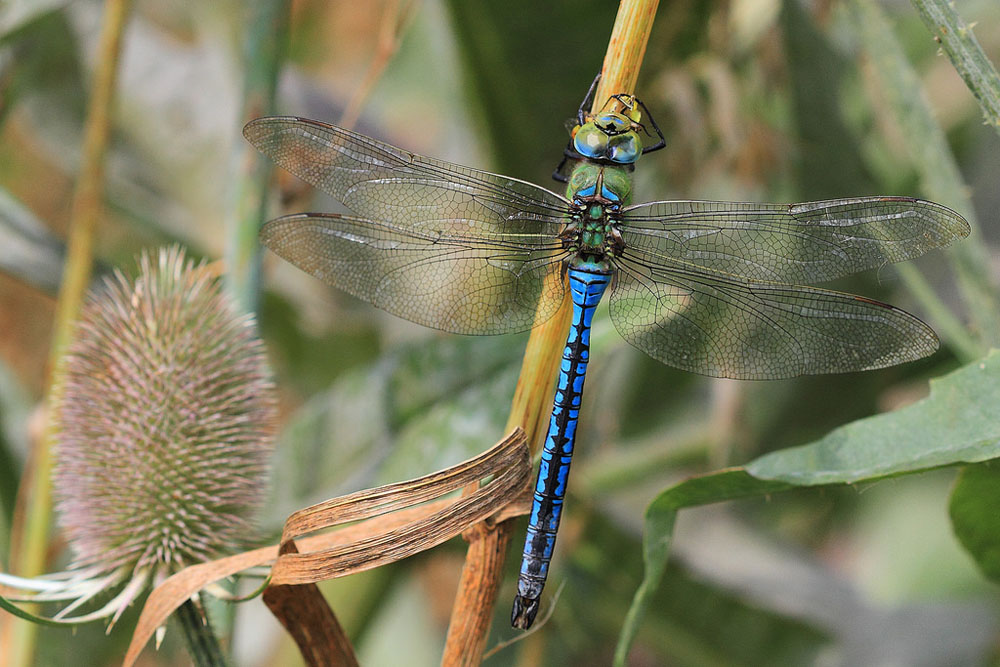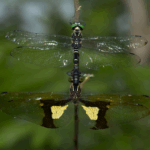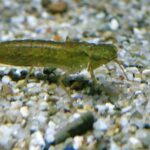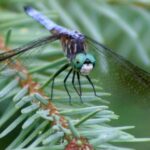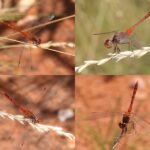Britain’s bulkiest Dragonfly.
Male: Sky blue abdomen with a central dark line.
Female: Green abdomen with a central dark line. Occasionally appears with a blue abdomen.
Distribution
This dragonfly has a wide distribution; it is found throughout Africa and through most of Europe, the Arabian Peninsula, and south-western and central Asia.Since the 1990s, its range has expanded in Europe, both northwards and to higher altitudes. For example, the first Scandinavian record was in 1994 in Denmark; in 2002 it was first recorded in Sweden and in 2004 first in Scotland; today it is regular in all three countries.
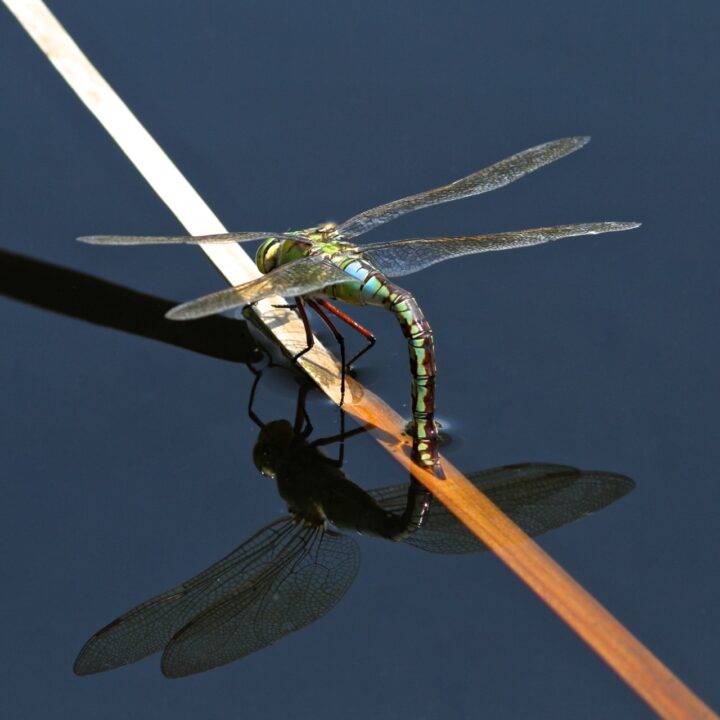
The emperor dragonfly is an impressively large and colourful dragonfly of ponds, lakes, canals and flooded gravel pits. It flies between June and August and even eats its prey on the wing.
The emperor dragonfly is a very large, impressive dragonfly that is on the wing from June to August. It is a common species of large ponds and lakes, as well as canals and ditches, but is rarely found away from water. The female lays her eggs in floating pondweed. One of the largest dragonfly species in Europe, the emperor dragonfly flies up high to look for insect-prey, such as butterflies and chaser dragonflies. It catches its prey in mid-air and may eat it on the wing.
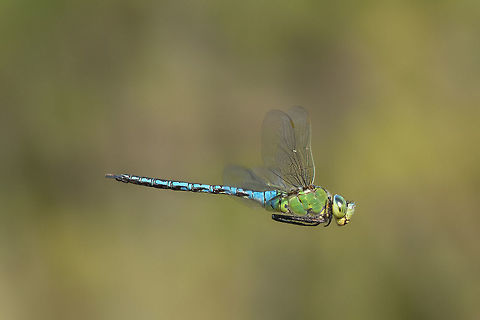
How to identify
Male emperor dragonflies are pale blue, with an apple-green thorax and a black stripe running the length of the body. Females are similar, but a duller greeny-blue. Both have greeny-blue eyes. This species is recognised by the combination of its large size and mostly blue colour.
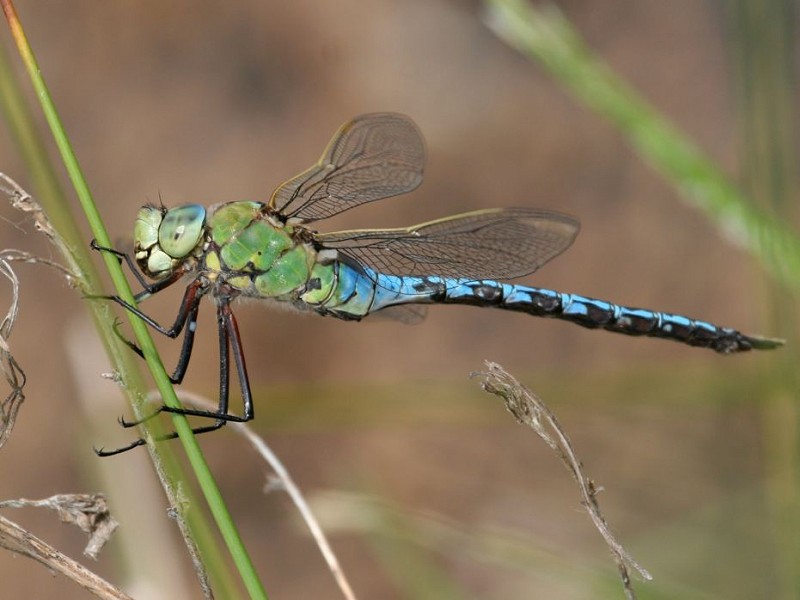
emperor dragonfly life cycle
Emperors, which can be seen on the wing in Britain from early June until August or early September, are univoltine. The eggs hatch after about three weeks, and then the juvenile insects spend either one or two years as larvae, eventually emerging as winged adults during the night.
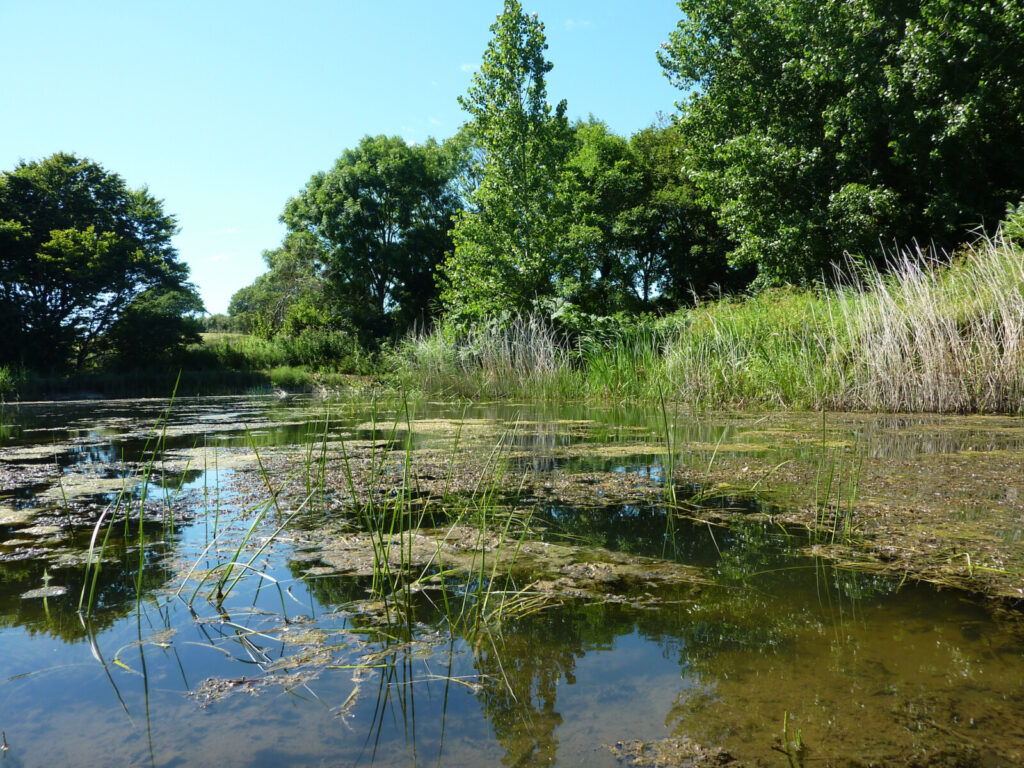
The males are territorial and patrol the water margins, chasing off intruders. Females are seen less frequently than males but they become more conspicuous when they are laying eggs, which they deposit on pondweed just below the surface of the water.
emperor dragonfly size
The emperor dragonfly is a large and bulky species. It is 73–82 mm (2.9–3.2 in) long, with average being 78 mm (3.1 in) and males growing larger than females. The average wingspan is 104 mm (4.1 in).
Habita
tLarge ponds, lakes, canals and slow moving rivers are the preferred habitat of the Emperor Dragonfly, particular those with abundant submerged and floating vegetation.
Mainly seen over large, densely-vegetated ponds, flooded gravel pits, shallow lakes, canals, large ditches and slow-flowing streams, this beautiful insect flies for long periods without resting, which makes it a difficult dragonfly to study.
Ecology and behaviour
The Emperor is rarely found away from water, preferring large ponds that are well-vegetated with a variety of pondweeds. Males are very territorial, spending much of their time patrolling around the edge of waterbodies and chasing off intruders. Females are most likely to be seen egg-laying, typically laying their eggs into pondweed just below the water’s surface.
First recorded in the North East in 1980, the Emperor is a thinly distributed species across the eastern half of the region. It can tolerate brackish and alkaline water and its easterly regional distribution may be due to its intolerance of acidic water. Since 2000, this species has rapidly increased its range northwards and has recently appeared in Ireland.
The Emperor catches its insect prey on the wing though larger prey, such as other species of dragonfly, may be eaten at rest. The large larvae also feed on insects during their development.

